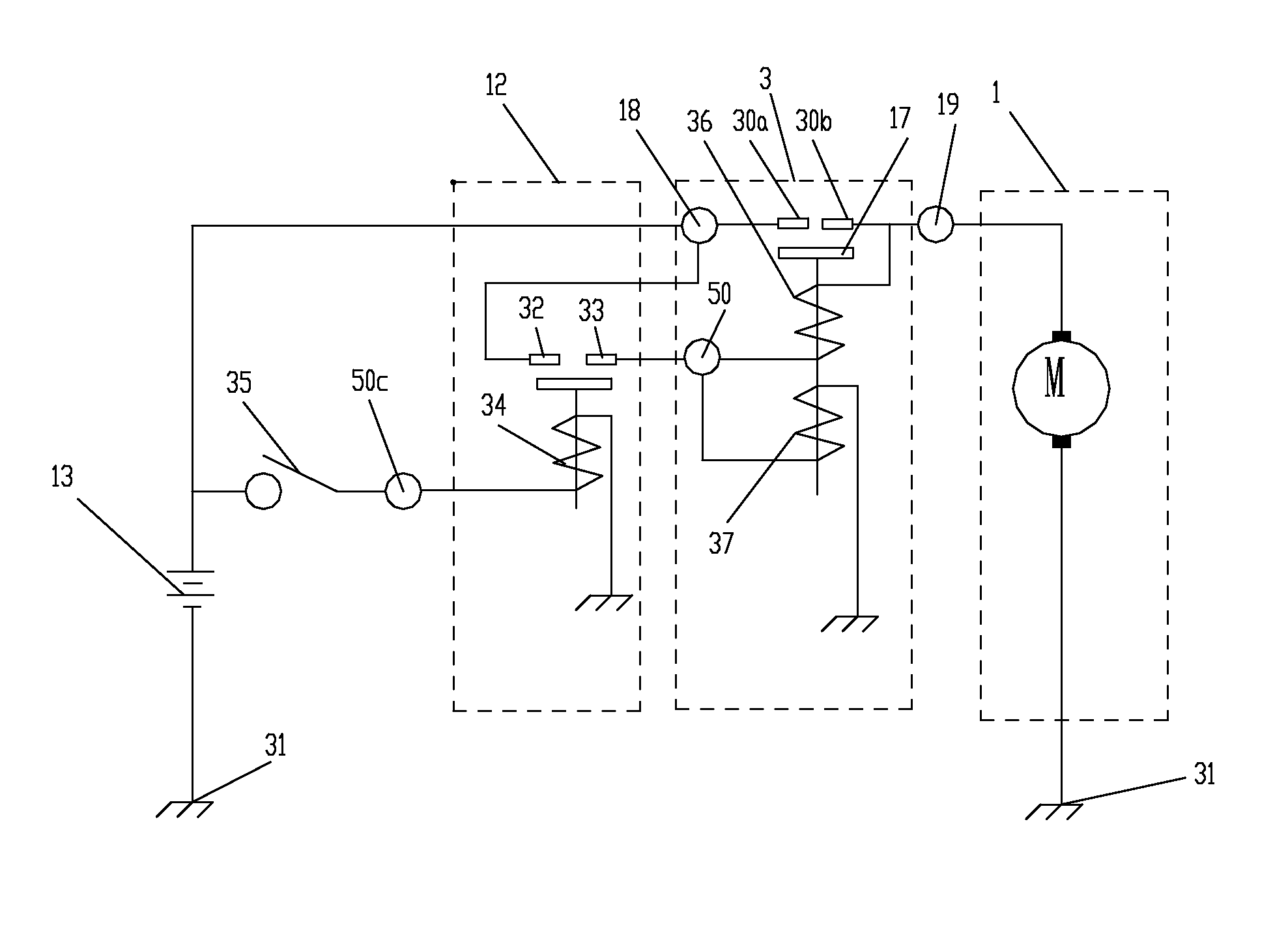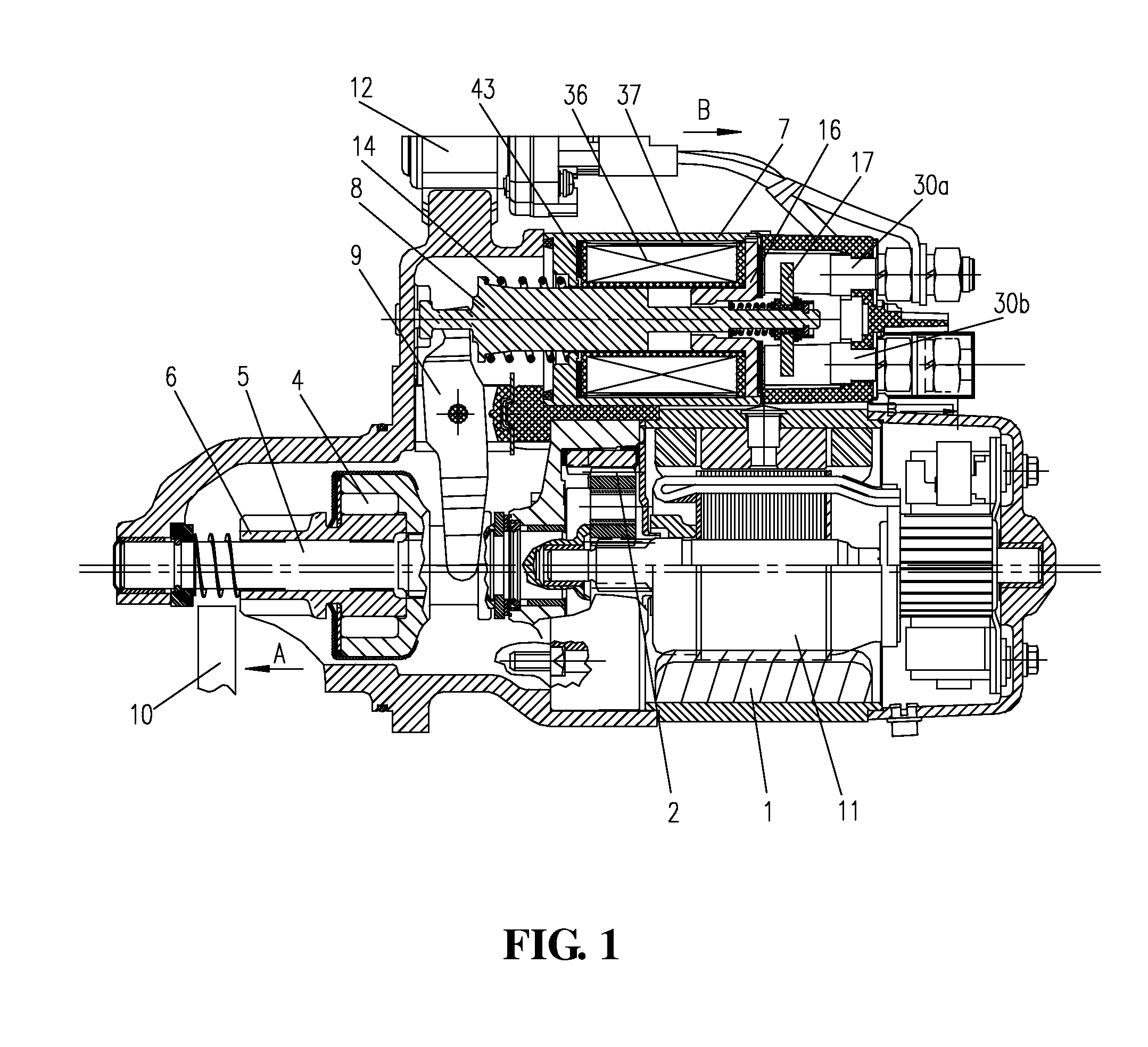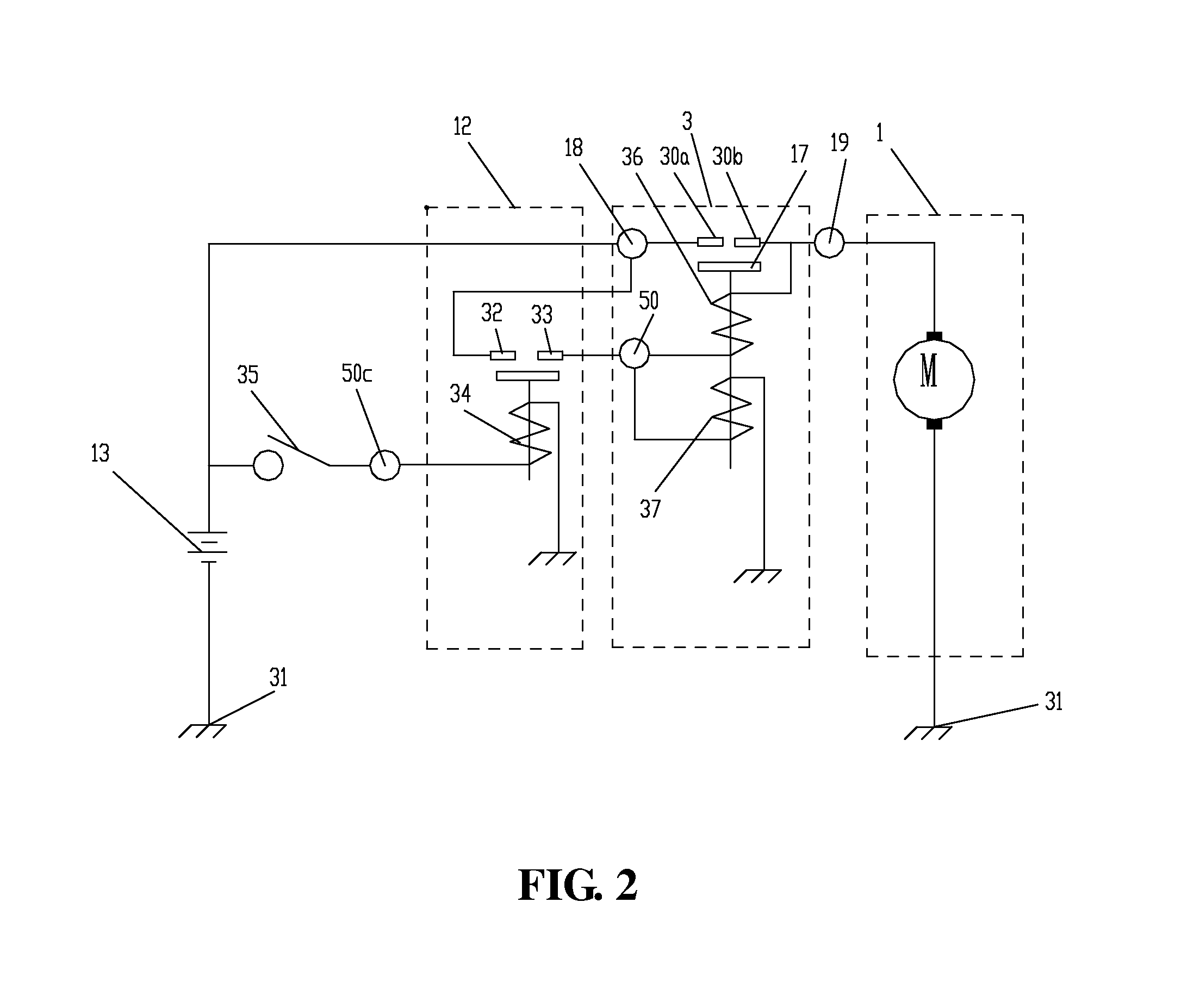Auxiliary mesh type starter
a mesh type, starter technology, applied in the field of starters, can solve the problems of electromagnetic switch burnout, electromagnetic switch prone to failure, electromagnetic switch burnout, etc., to prevent the breakage of electromagnetic switch, isolator or the like, and smooth disconn
- Summary
- Abstract
- Description
- Claims
- Application Information
AI Technical Summary
Benefits of technology
Problems solved by technology
Method used
Image
Examples
example 1
[0071]Referring to FIG. 3, the auxiliary mesh type starter according to the present invention, which is substantially similar in structure to the auxiliary mesh type starter as shown in FIG. 1, also comprises a motor 1, an electromagnetic switch 3 connected to the motor 1 and relays 12 connected to the electromagnetic switch 3, wherein the relays 12 are connected to a key switch 35. The electromagnetic switch 3 is essentially the same as a common auxiliary mesh type electromagnetic switch, i.e., the electromagnetic switch 3 still controls the power on / off of the motor 1 using a pair of contact points, except that the head end of the attracting coil 36 and the head end of the holding coil 37 are connected separately and are controlled separately by two relays. To be specific, the relays 12 include a first relay and a second relay, wherein the first relay includes contact points 321, 331 and a coil 341, with the head end (which is connected to the terminal 50 I) of the attracting coil...
example 2
[0076]Referring to FIG. 4, the structure in this example is substantially the same as the structure in Example 1. The difference is: in this embodiment, the number of turns of the attracting coil is zero; preferably, the attracting coil 36 is a means for limiting the magnitude of current, i.e., the attracting coil 36 can be regarded as a current limiting resistor 36′, and the slow-turning torque of the starter is adjusted by adjusting the current limiting resistor 36′. That is to say, in this example, the electromagnetic switch 3 only has one coil (the holding coil 37), the electromagnetic force generated by the coil plays a role in holding the plunger 8 and also in attracting the plunger 8. Since the other structures are essentially the same as those described in Example 1, details are not repeated herein.
[0077]This example has the following advantages:
[0078](1) Since the slow-turning torque of the starter is adjusted through the current limiting resistor, the magnitude of current ...
example 3
[0081]Referring to FIG. 5, the structure in this example is substantially the same as the structure in Example 1, i.e., two relays are used to control the attracting coil 36 and the holding coil 37, respectively. The difference is: in this embodiment, the first relay that controls the attracting coil 36 is a time relay, i.e., the attracting coil 36 is controlled by a delay relay, so, after the attracting coil 36 is powered on for a short time (e.g., within 2 s), the contact points of the first relay are compelled to be disconnected so that in abnormal conditions (e.g., when the flywheel gear ring 10 and the driving gear 6 do not reasonably match and the latter cannot mesh with the former), the attracting coil 36 would not have a large current flowing through it for a long time, thereby avoiding the fault of burning out the electromagnetic switch that is caused for particular and abnormal conditions.
[0082]Similarly, the second relay that controls the holding coil 37 can also be a tim...
PUM
 Login to View More
Login to View More Abstract
Description
Claims
Application Information
 Login to View More
Login to View More - R&D
- Intellectual Property
- Life Sciences
- Materials
- Tech Scout
- Unparalleled Data Quality
- Higher Quality Content
- 60% Fewer Hallucinations
Browse by: Latest US Patents, China's latest patents, Technical Efficacy Thesaurus, Application Domain, Technology Topic, Popular Technical Reports.
© 2025 PatSnap. All rights reserved.Legal|Privacy policy|Modern Slavery Act Transparency Statement|Sitemap|About US| Contact US: help@patsnap.com



